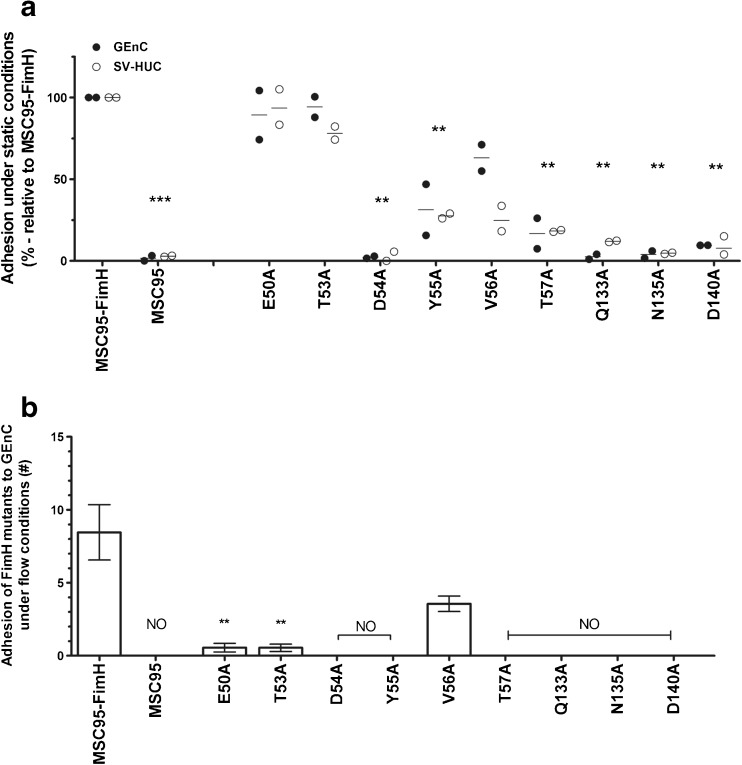Fig. 5.
FimH mutations influence adhesion to endothelial and urothelial cells under static and shear stress conditions. a Adhesion of MSC95-FimH and nine FimH strains with mutations in the MBP was analysed under static conditions followed by FACS to glomerular endothelial (GEnC, white bars) and urothelial cells (SV-HUC, black bars). Mutations show abrogated binding, similar in both endothelial and urothelial cells. Data are shown as the average measurements of two individual experiments done in triplicate with the mean. *p < 0.05, **p < 0.01 compared to MSC95-FimH (Kruskal–Wallis followed by Mann–Whitney tests). Each strain was analysed two times in triplicate and individual p-values were corrected by the Benjamini method. b The amount of MSC95-FimH and FimH mutant E. coli strains that adhered to glomerular endothelial cells (GEnC) per HPF was counted after 5 min of shear stress. Data are shown as mean ± SEM. *p < 0.05, **p < 0.01 compared to MSC95-FimH (Student’s t-test). NO no binding observed. Each strain was analysed three times in triplicate

